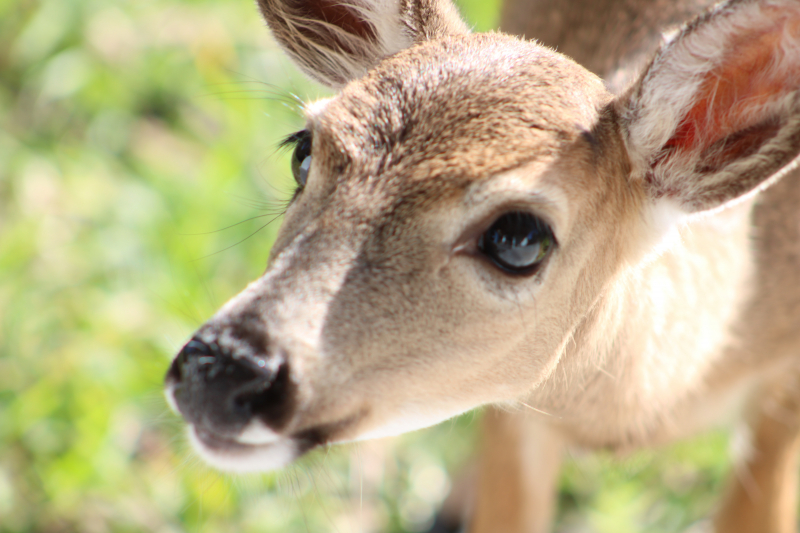Key Deer
The Key Deer (Odocoileus virginianus clavium) stands as a unique and enchanting subspecies of the white-tailed deer, captivating hearts with its small stature and delicate features. Endemic to the Florida Keys, particularly Big Pine Key and No Name Key, the Key Deer holds a special place in the conservation efforts and ecological balance of this unique island habitat.
Key Deer are the smallest subspecies of white-tailed deer, with adults typically standing about two and a half feet tall at the shoulder. They exhibit a reddish-brown coat, large ears, and a white underside. Male Key Deer, known as bucks, sport antlers that usually have only a few points, reflecting their miniature stature compared to mainland white-tailed deer.
Key Deer are primarily found in the lower Florida Keys, where their habitat consists of freshwater wetlands, hardwood hammocks, and coastal areas. Their range is limited to the islands where freshwater sources are available, making them highly adapted to the specific conditions of the Florida Keys.
The Key Deer population faced severe threats in the mid-20th century, primarily due to habitat destruction, vehicle collisions, and diseases transmitted by introduced domestic animals. By the 1950s, the population had dwindled to a mere 25 individuals. Recognizing the urgency of the situation, conservation efforts were initiated, leading to the establishment of the National Key Deer Refuge in 1957. Through dedicated conservation measures, the population has rebounded, and the Key Deer is now listed as a federally endangered species.
The establishment of the National Key Deer Refuge has been instrumental in the conservation of this subspecies. Habitat protection, control of invasive species, and initiatives to reduce vehicle collisions have played crucial roles in stabilizing and increasing the Key Deer population. Additionally, public awareness campaigns aim to educate residents and visitors about the importance of protecting these unique creatures and their fragile habitat.
Key Deer have adapted to their island habitat by developing a diet that includes a variety of plants, such as mangrove leaves, that may be less palatable to mainland white-tailed deer. They are also known for their ability to swim between islands in search of food, contributing to their ecological resilience.
















